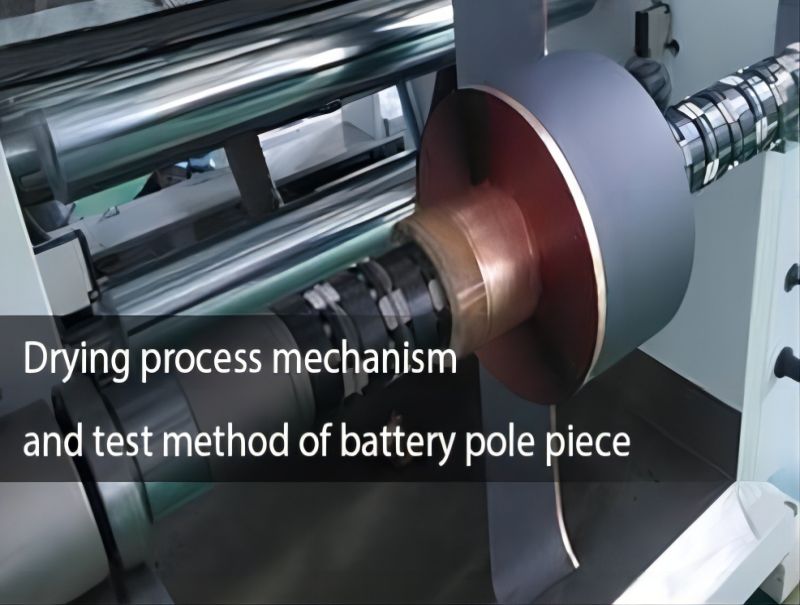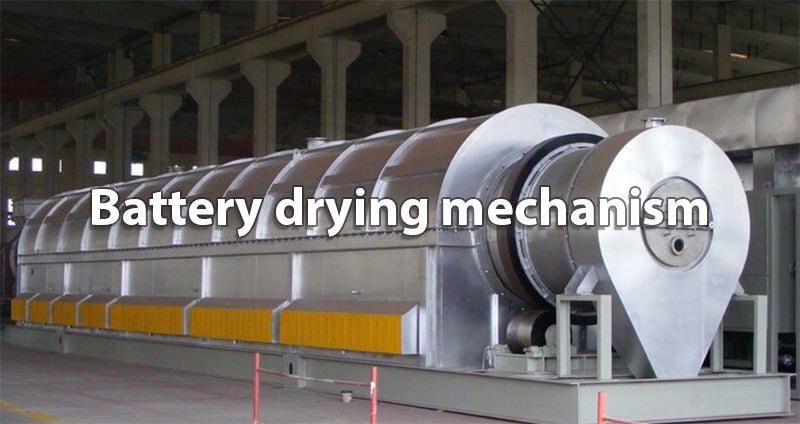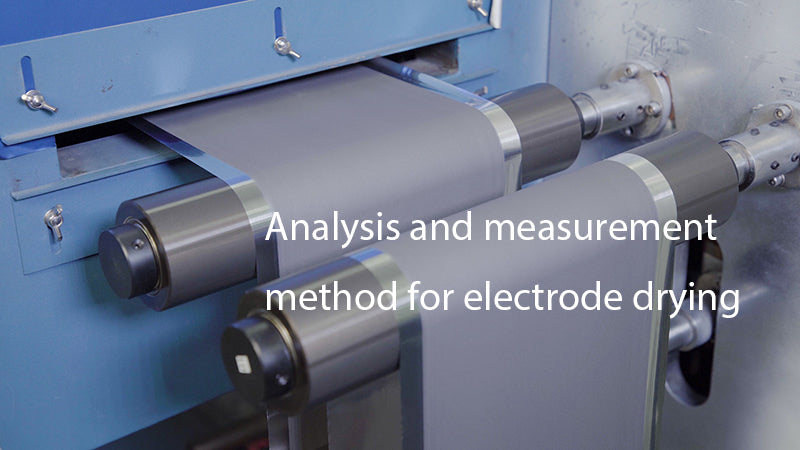
Main content:
The manufacturing process of lithium-ion batteries is extremely complex, especially in the drying process with many controllable parameters. These processes affect the porous structure and properties of the electrode membrane and ultimately the performance of the battery. However, limited drying information is available and kinetics are poorly understood due to the limitations of existing metrology methods. To better control the quality of electrode coatings, new methods need to be developed to understand drying kinetics.
Battery drying mechanism
There is a typical phase change process during the electrode drying process. The process can be divided into several stages: aggregation, film curing, film shrinkage and pore emptying, separation and bonding. Agglomeration refers to the combination of particles, solvent and binder to form a semi-solid coating. The fluidity of the initial slurry is very important, because once the coating loses fluidity, the slurry must form a stable network structure.
This article proposes both spontaneous aggregation and evaporation-induced aggregation mechanisms, in which reducing the evaporation rate increases the interfacial area. In the film curing stage, a surface cured layer is formed on the surface of the coating. The cured layer grows as the solvent evaporates and the area of the cured layer expands until it approaches the substrate. As the solvent evaporates, the binder migrates with the solvent, and once the shrinkage of the film stops, the migration stops.

Raising the temperature can reduce the viscosity of electrode slurry and reduce sedimentation. During the shrinking phase of the film, the amount of residual solvent in the binder is low, and the coating eventually shrinks and voids occur. Scientists hypothesized that during film shrinkage, the solid components in the wet film would come into contact with each other, eventually forming a connected solid layer during shrinkage, and the porous structure would form the backbone of the dry film.
During film shrinkage and solvent evaporation stages, functional additives are mobile and often distributed throughout the film. In the segregation and bonding stage, a strong adhesive force is formed between the polymer and the substrate, and the residual solvent is removed, so that an internal bonding force is also formed between all the particles in the pole piece. Thin films may segregate, and its driving force is closely related to temperature, solvent evaporation rate, drying time, and loading.
Solvent evaporation controls different stages of pole piece drying and thus film morphology, usually divided into two stages according to solvent concentration, drying rate, and moisture content. In the first stage, solid particles are suspended in a solvent, the solvent evaporates rapidly at a constant rate, and the electrode forms a compact porous structure. The second phase is longer and more complex, the redistribution of conductive additive and binders.

Parameters and variables affecting battery performance
Drying method
The drying process and method are critical to establish the microstructure of the electrode, the cohesion of the film, and the adhesion to the current collector. Before deposition, the components of the electrode slurry also need to be well dispersed, and the active ingredients are stabilized in the binder and conductive additives.
The most common electrode drying method in industrial production is to use a large conveyor belt dryer, equipped with infrared heat dissipation heater or hot air fan. For the pole piece drying in the laboratory, the conventional method is to coat the slurry on the current collector and dry it at room temperature. Inert gas flow (for air-sensitive materials) is suitable for new battery materials such as high-nickel NMC or air-sensitive materials such as sulfide solid electrolytes. Inert gases may accelerate DP as heavier gases displace solvent during drying.
Spin drying can also speed up fabrication, but only for electrodes of certain sizes and shapes. The spray drying method can achieve high-speed drying and has been widely used in many industries. The remaining water in the electrode will cause harmful side reactions and affect the performance of the battery. The water concentration should be controlled to be less than 100ppm.
Drying speed
Industrial solvent evaporation involves huge energy consumption and is a decisive cost factor in the manufacture of battery electrodes. During the electrode fabrication process, an optimized drying rate will promote a balanced distribution of the electrode membrane binder.
However, a higher drying rate will lead to uneven distribution of soluble and dispersed binders in the electrode, which may aggregate on the electrode surface, resulting in electrode delamination. Drying temperature and coating thickness also need to be considered, and these two factors also have a greater impact on drying time.
Binder type
The most widely used organic based binders are PVDF and NMP. Compared with NMP-based solvents, the use of water-based solvents can be expected to reduce the cost by two times in the drying and solvent recovery steps. Water-based slurry has the characteristics of excessive particle agglomeration, more hydroxyl groups on the surface of the coating, and high surface tension. Additional dispersants need to be added to provide an electrostatic barrier. In addition, the cathode slurry is alkaline, which may corrode the aluminum foil and promote metal dissolution.
Thickness and surface load
The formulation and quality of the electrode are directly related to the performance of the battery. The gravimetric and volumetric battery high energy density can be achieved by reducing the amount of inactive materials, reducing pore volume, and using thinner current collectors. The synergistic effect of active material, binder, and conductive carbon in the cathode and its impact on battery performance are worth exploring.
Modeling of drying parameters and variables
Due to the complexity of the drying process, involving coupled mechanical and chemical mechanisms, many parameters and variables are required to describe the system. At present, the main method for analyzing the correlation between various drying parameters and variables is still based on trial and error, so reliable and flexible models are urgently needed to achieve effective analysis of drying parameters/variables.
Currently proposed models are mainly based on mechanistic analysis, using physical or chemical equations to describe the drying kinetics, and few attempts have been made to analyze the parameters of pole piece drying using machine learning methods.

Analysis and measurement method for electrode drying
Various measurement methods are used in the drying process to study the drying mechanism, and the principles are different and the precision is also different. Some of these methods have been introduced into the drying process of Li-ion electrodes in ex-situ or in-situ methods to study the microstructural evolution or composition distribution of electrodes. Most of the current metrology measurements are based on ex situ measurements.Summary and outlook
This article discusses the influence of different parameters and variables during electrode sheet drying on electrode structure and performance, and reviews various models of drying kinetics. The efficiency of the drying step can be improved by reducing the total drying time while maintaining good mechanical properties of the dried electrode coating (especially the adhesion between the electrode film and the current collector).
Related article: Top 10 battery aluminum plastic film brands, PV POE film, conductive additive companies
















